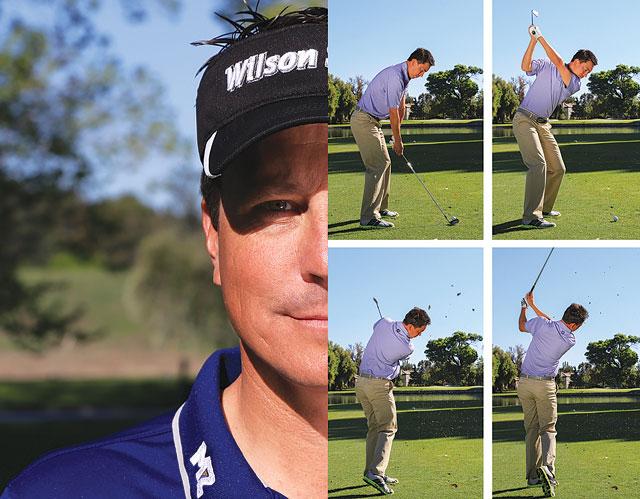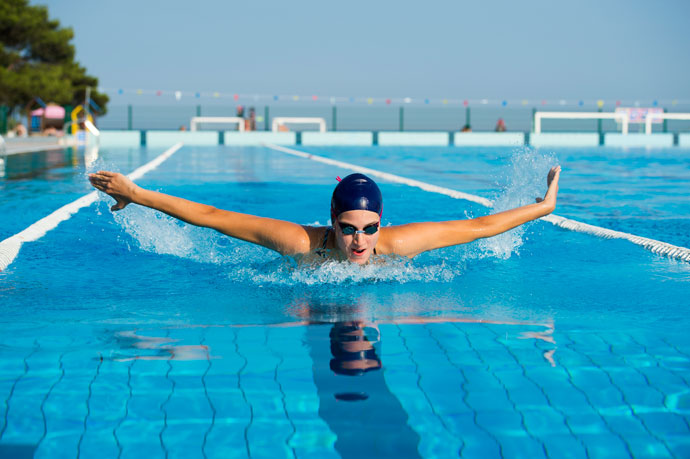THE first and most important step towards becoming a successful sea angler is to select a properly balanced outfit of tackle. It might be a good idea, therefore, to begin by discussing some of the problems which confront the novice when choosing his first rod and reel, and to point out various ways in which he can avoid wasting money on unsuitable tackle.
RODS
Materials
Very often the most serious problem - especially for young anglers - is the question of expense. The price of a rod naturally depends to a large extent on the materials used in its construction, so let us first consider the advantages and disadvantages of these various materials, and their relative costs.
Whole Cane is used mainly for cheap boys' rods. It will cope with average-sized fish, but is liable to become strained by a really heavy fish, or a species which fights strongly. Also, on coasts where it is considered necessary to cast out very heavy leads, stiff bamboo rods are used by some shore anglers. The majority of present-day sea anglers prefer a more lively rod for shore casting, however, and in most parts of the country whole cane is rapidly going out of fashion.
Split Cane rods are made by cutting wedge-shaped strips from a specially selected and treated length of bamboo. Six of these wedge-shaped sections are then fitted and glued together to form a hexagonal cane of greatly superior strength, straightness and flexibility. Sometimes, when a sea rod is designed for heavy work, such as boat fishing for large conger, skate or sharks, a second layer of split cane is built up around the first hexagonal surface. Such rods are said to be 'double-built'.
Split cane was once the first choice of every discerning sea angler, but increasing labour costs and the advent of fibre-glass considerably reduced the demand for this type of rod.
The main disadvantage of split cane, from the sea angler's point of view, is the risk of the protective varnish coating becoming chipped against rocks, metal boat and pier fittings, etc. This allows salt water to penetrate into the cane, and can result in serious damage unless the rod is regularly and carefully maintained.
Greenheart was at one time a favourite material for making medium-priced sea rods, but it has now been superseded by fibre-glass.
Fibre-glass began to gain favour as a material for fishing rods shortly after the Second World War. For sheer strength, flexibility and durability it has no equal, and its ability to stand up to hard knocks makes it especially suitable for rock fishing. Other advantages of fibre-glass are that it is impervious to water, and cannot rot, warp or take on a 'set'.
There are two kinds of fibre-glass rod - solid and hollow. The solid type is the cheaper, and is probably the best medium-priced weapon for average to heavy fishing from boat and pier. For lighter forms of fishing such as spinning, and for beachcasting, a hollow fibre-glass rod will be found to possess a more satisfactory action.
Steel tubular rods, when specially designed and built for sea fishing, are capable of giving long and satisfactory service. The steel tubing must, of course, be thoroughly proofed against salt water corrosion, and the modern practice is to sheath the rod with fibre-glass tape, thus providing a durable finish which will not chip or wear.
Only top quality tubular steel rods can be recommended for sea fishing, and these are fairly expensive - somewhat in excess of a fibre-glass rod. It may only be prejudice, but most British sea anglers would prefer fibre-glass.
Design
Just as sea rods vary considerably in their materials, workmanship and price, so do they also differ in length, thickness, taper, weight and various other details of design. The reason for this is that there are dozens of different sea fishing methods, and each method requires a rod which possesses certain essential properties.
Although it is possible by careful selection to choose a rod which can be used successfully for a number of different fishing methods, the beginner must realise that there is no such thing as a true general purpose rod which will prove ideal for every kind of sea fishing. Listed below are the main types of sea rod, with brief details of those factors which influence their design:
Pier Rods (i) For most kinds of pier fishing, lifting power is more important than ability to cast long distances. However, the rod must be reasonably flexible, so that it acts as a shock-absorber when a fighting fish makes a sudden run or dive. Length varies, but 8-9 ft. is popular, (ii) Light fishing is possible from some piers and jetties, using a rod similar to that described below under Boat Rods.
(ii). Boat Rods (i) Bottom fishing from a boat requires a rod with sufficient lifting power, and this varies according to the strength of the local tides, species of fish, etc. For example, deep-sea fishing for large skate and conger requires a really powerful rod with considerable lifting power. Length varies, but about 7 ft. is popular, (ii) In the lighter forms of boat fishing, such as float fishing and driftlining, liveliness of the rod is the more important consideration. It should be flexible without being 'sloppy'; thus enabling the hook to be driven home from a distance, and large fish to be played firmly.
Shore Casting Rods (i) Casting ability, coupled with good pulling power and steely flexibility when playing a fish, are the most important things to look for when choosing this type of rod. A 10-11 ft. rod, casting about 4-6 oz. of lead, is recommended for average coastal conditions. Float Fishing Rods. Most types of sea rod can be used for float fishing, but a light beach caster or a medium-length spinning rod will be found particularly suitable for most conditions. The rod should be lively, but stiff enough to pick up line quickly and drive the hook home when striking. The length varies according to local conditions, but 9-10 ft. is popular for jetty fishing. Spinning Rods vary considerably in design.
The would-be sea angler should have a fairly clear idea of the sort of fishing he intends to take up before visiting a tackle shop to buy his first rod.
If he wishes to concentrate on one particular branch of fishing, it will be a comparatively simple task to select a suitable rod. Quite understandably, however, most beginners seek a 'general purpose' rod - and, as we have already explained, no such thing exists. Nevertheless, it is possible to buy a rod that is capable of dealing more or less satisfactorily with a fairly wide variety of fishing methods. Opinions differ considerably on this subject, because so much depends upon local conditions, but here are two tentative suggestions which some readers may find useful:
A 10 ft. shore casting rod, in two 5 ft. sections, suitable for beach and rock fishing. With this type of rod it would be possible to use an alternative butt, about 3 ft. long; thus providing a shorter 8 ft. rod for pier and medium boat fishing.
An inexpensive one-piece solid fibre-glass rod, with a 5 ft. top tapering from approximately 1/2 in. to 5/32 in., and a 2 ft. butt. I have found that this makes a very sporting medium boat rod, capable of dealing with anything from bream to tope; although heavy conger and skate naturally require a rod with greater lifting power. It can also be used for jetty or rock work; and - at a pinch - for ground fishing from a fairly sheltered shore.
Reverting to the question of rod materials, Iwould suggest that a solid fibre-glass rod will probably be the best buy for the person who has to economise, or who needs a rod which will stand up to a certain amount of abuse. But those who can afford a hollow glass rod will find that its superior action provides extra pleasure and sport - especially when beach casting, spinning or light float fishing.
Certainly it is a waste of money to buy a rod made of inferior materials. Young anglers - and their parents - would be well advised to bear this in mind before buying a cheap 'boy's rod'.
One way to cut costs is to build a rod. A number of firms specialise in build-it-yourself rod kits for the handyman-angler, and details of these are advertised regularly in Angling Times and other fishing journals. The kits are usually supplied with full instructions, which are quite simple to carry out. In recent years fibre-glass, in the form of 'blanks', has become a very popular material with amateur rod builders; but it is also possible to obtain split cane kits, with the split cane already made up and glued by professional craftsmen.
Rod Fittings
Rings should be of hard stainless steel, or some other metal that is impervious to the corrosive effects of salt water. On rods designed for heavy fishing the rings may be fitted with a porcelain core to prevent the line cutting into the metal. This type, however, possesses the disadvantage of being fairly easily broken. Worse still, the porcelain in the end ring may become slightly cracked or chipped by a carelessly retrieved swivel without the angler noticing it (easily done when night fishing), so that the line frays through while playing a big fish.
For this reason porcelain-lined rings are not favoured as much as they used to be, and have become largely superceded by rings lined with ‘Regalox’ and similar materials capable of standing up to hard knocks and rough handling. For a heavy duty boat rod, the pulley type of end-ring is also useful
Light spinning rods are frequently fitted with rings lined with agate or some synthetic substitute in order to reduce friction and wear. Rods of this type are not normally subjected to such rough treatment as heavy boat rods, so the risk of breakage is less. Even so, it is a good plan to keep a spare end-ring and intermediate ring in the tackle box, especially when on a fishing holiday.
One important point, sometimes overlooked by beginners, is that a rod used with a fixed-spool or side-casting reel must be fitted with a large stand-off ring immediately above the butt. It should also have suitably graduated intermediate rings to 'funnel' the line from the large butt ring to the small end-ring.
Reel Fittings. Several methods are used for clipping the reel to the rod handle. The simplest device consists of two sliding rings, which grip the 'saddle' of the reel and hold it in position. Normally these are of corrosion-proof metal, but in recent years nylon rings have made their appearance. Because they are pliable - and apparently very slightly elastic; - they grip the reel very tightly.
Free-sliding fittings of this type, whether of metal or nylon, are particularly suitable for rods which are to be used with a fixed-spool or side-casting reel, because they allow the reel position to be varied in order to obtain the correct balance and casting grip. It should also be noted that these two types of reel need to be fitted high up the rod butt if they are to give satisfactory results, so it is desirable that the rod be fitted with a long cork handle of uniform thickness throughout most of its length.
Another simple type of reel fitting consists of one sliding ring and one fixed ring - the latter being grooved to take the reel saddle. Theoretically the fixed grooved ring should help to make the reel more rigid, but in actual practice it rarely succeeds in doing so. This is because the reel always has to be fitted in the same position, with the result that in time the cork handle becomes worn at this spot, and the reel saddle becomes a loose fit. This type of fitting is intended for use with centre-pin reels, and is not recommended for fixed-spool and side-casting reels.
Finally, there is the screw type which clamps the reel saddle firmlv into channelled fittings by means of a locking nut. This is very useful for heavy deep-sea fishing and shore-casting where it is essential for the reel to remain rigid under considerable strains.
Screw fittings are also very popular with many sea anglers who specialise in lighter forms of fishing. Nevertheless, the beginner should bear in mind that the majority of screw fittings possess the disadvantage of fixing the reel in one position only. This may be all right as long as you stick to one type of reel, but if, for example, you change over later on from a centre-pin to a fixed-spool you will probably run into difficulties.
Some screw fittings, however, can be moved fairly easily up or down the handle, and these are recommended provided there is no risk of the fittings being shifted unintentionally while playing a fish.
Ferrules. It is important that the rod ferrules fit closely enough to create plenty of suction. On the other hand they must not be over-tight, because a very definite point of weakness occurs in a pair of ferrules which cannot be fitted snugly together.
The female ferrule should have a reinforcing band around its rim, and this will need to be fairly substantial in the case of deep-sea and beach casting rods. Also, the ends of the ferrules covered by whippings should preferably consist of a series of metal tongues which will flex with the bending of the rod. These cannot be seen, of course, but it is often possible to feel their outline underneath the whippings.
Facts About the Base Percentage in Daily Fantasy Baseball

Learn Like A Pro, Play Like A Pro!

Swimming Butterfly – How to Breathe

Copyright © www.mycheapnfljerseys.com Outdoor sports All Rights Reserved